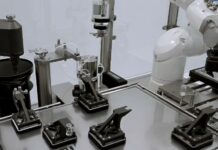The global market for fluid handling systems is expected to grow from USD 72,765.23 million in 2023 to USD 1,08,322.43 million in 2032. The most recent research report by Polaris Market Research projects that between 2024 and 2032, it will grow at a compound annual growth rate (CAGR) of 4.5%.
What is the market size of systems for handling fluids?
In order to transmit the flow and force of an operating fluid to specialized activities like labor, heat transmission, or manufacturing goods, fluid handling systems are often a network of interconnected devices. Fluid management systems are critical to industry. It is not enough to just possess one. It has to be well-defined to be productive, much like other industrial departments. Rendering is more effective and may save time and other resources. It could operate more effectively and last longer if certain sections are improved. Well-made gadgets display high output. This kind of organization, the choice of fluids, and the system’s goal are some of the elements that might vary greatly depending on the intended application.
Among the parts that make up the market are storage tanks, pumps, flow meters, and control valves. Positive ejectors are another category for pumps, and centrifugal pumps are essential for supplying the right fluid flow rates in a range of applications. The chemical industry is a major driver of demand for fluid handling equipment due to its many operations that need solutes, solvents, and utilities like water.
Main Features of the Report:
- The fluid handling systems market is being propelled by many factors, such as automation, valve technology, and advancements in pump design.
- Product, application, and geography are the three main variables used in market segmentation.
- Asia Pacific leads the industry with the largest market share for fluid handling systems.
Major Companies in the Market for Fluid Handling Systems
- ALFA LAVAL
- Christian Bürkert GmbH & Co. KG
- Crane Company
- Flowserve Corporation
- Danfoss
- Dover Corporation
- CIRCOR International, Inc.
Leading Innovations in the Market
Development Trends and Accelerators:
Growth in the Food Processing industry: One of the main industries using fluid handling systems for a variety of flow operations is the food processing industry. Rising food costs in emerging countries are the driving force behind this growth, which is anticipated to have a positive impact on market expansion soon.
Sensor Technology Development: The development of these systems has been aided by automation, the Internet of Things, and sensor technology. These systems’ ability to monitor and manage fluid transfer processes in real time enhances presentation, lowers mistake rates, and enables predictive maintenance. The market for fluid handling systems is being supported by advancements in pump designs, valve technology, and automation, which enable quicker and more dependable fluid transfer operations while lowering energy consumption and operating expenses.
Reduction of Contamination Risks: The pharmaceutical industry’s growing need for fluid handling systems is a result of strict government rules requiring contamination-liberated functions. By using materials and technologies that minimize the possibility of contamination, these techniques confirm clarity.
Issues
High Investment Costs: The high financial and functional costs of fluid handling systems make acquisitions very challenging. The instruments and framework account for a large amount of the initial capital outlay, whereas maintenance, compliance, and supervision costs are part of the continuing operating costs.
Which Region Leads the Industry for Fluid Handling Systems?
Asia Pacific: The fluid handling systems market was headed by this region, which had the greatest revenue share. The region’s dominance in the market may be due to the growing need for a range of fluid handling system hardware across industries such as water, wastewater, building and construction, energy and power, and oil and gas.
North America: The market for fluid handling systems is anticipated to develop at the quickest rate in North America during the forecast period. This is due to the fact that the US is developing due to the country’s growing requirement for wireless frameworks to monitor instruments and the oil and gas industry’s explosive need for control valves.




















